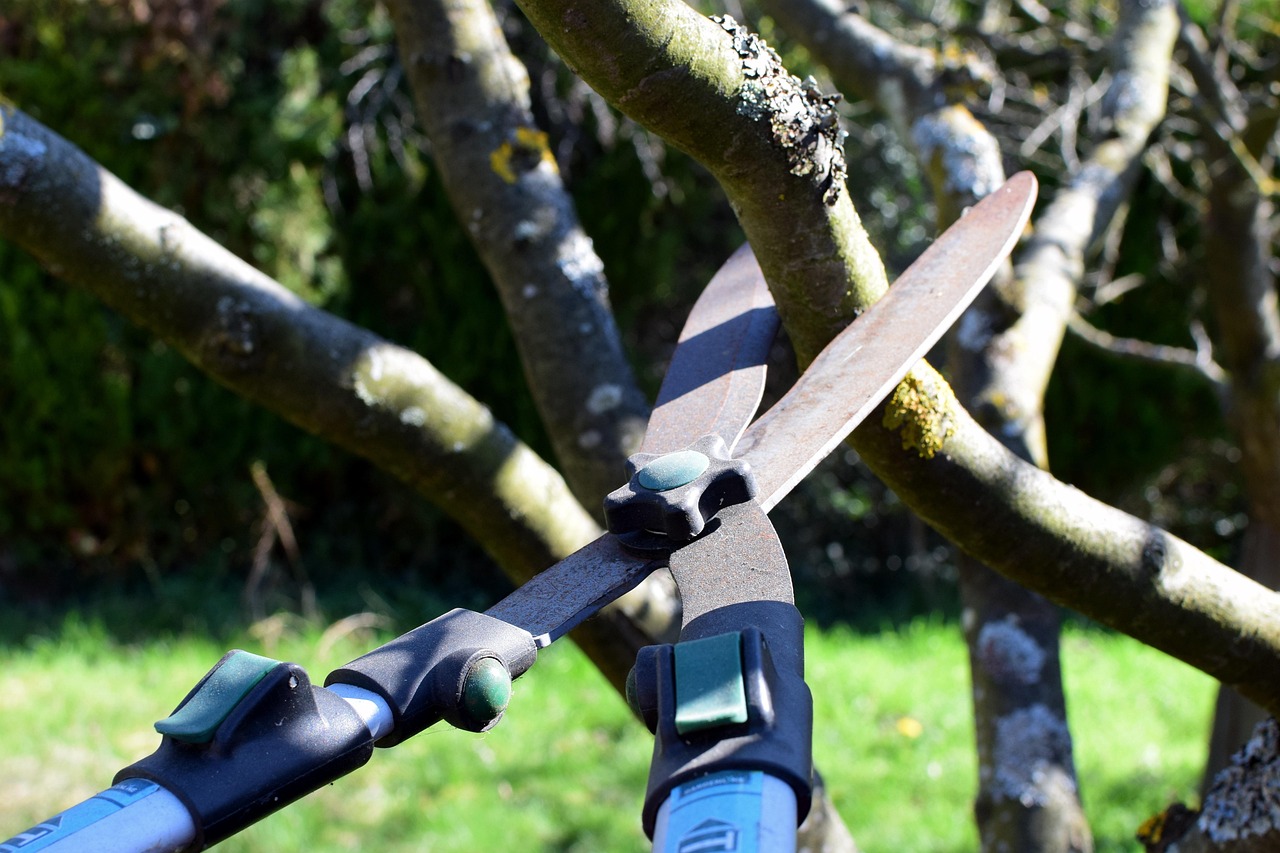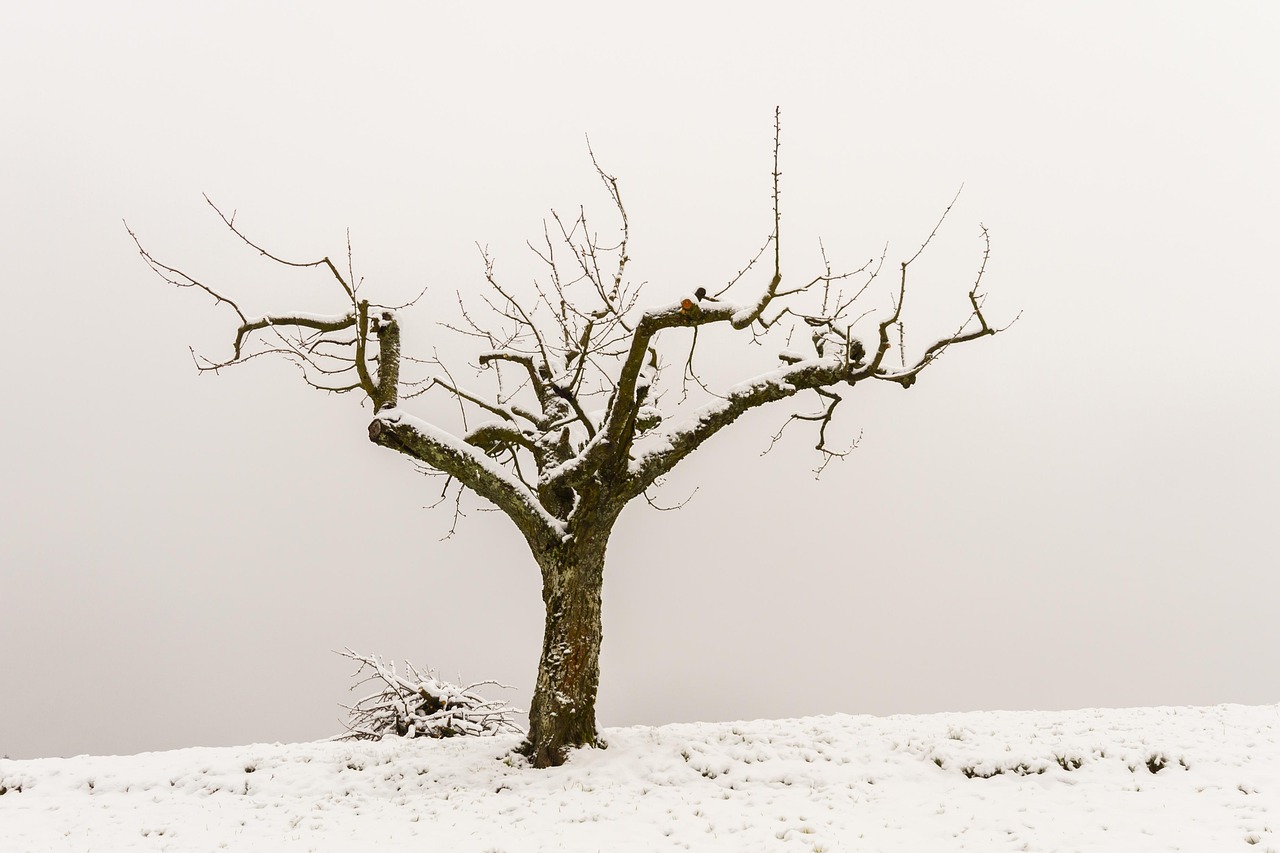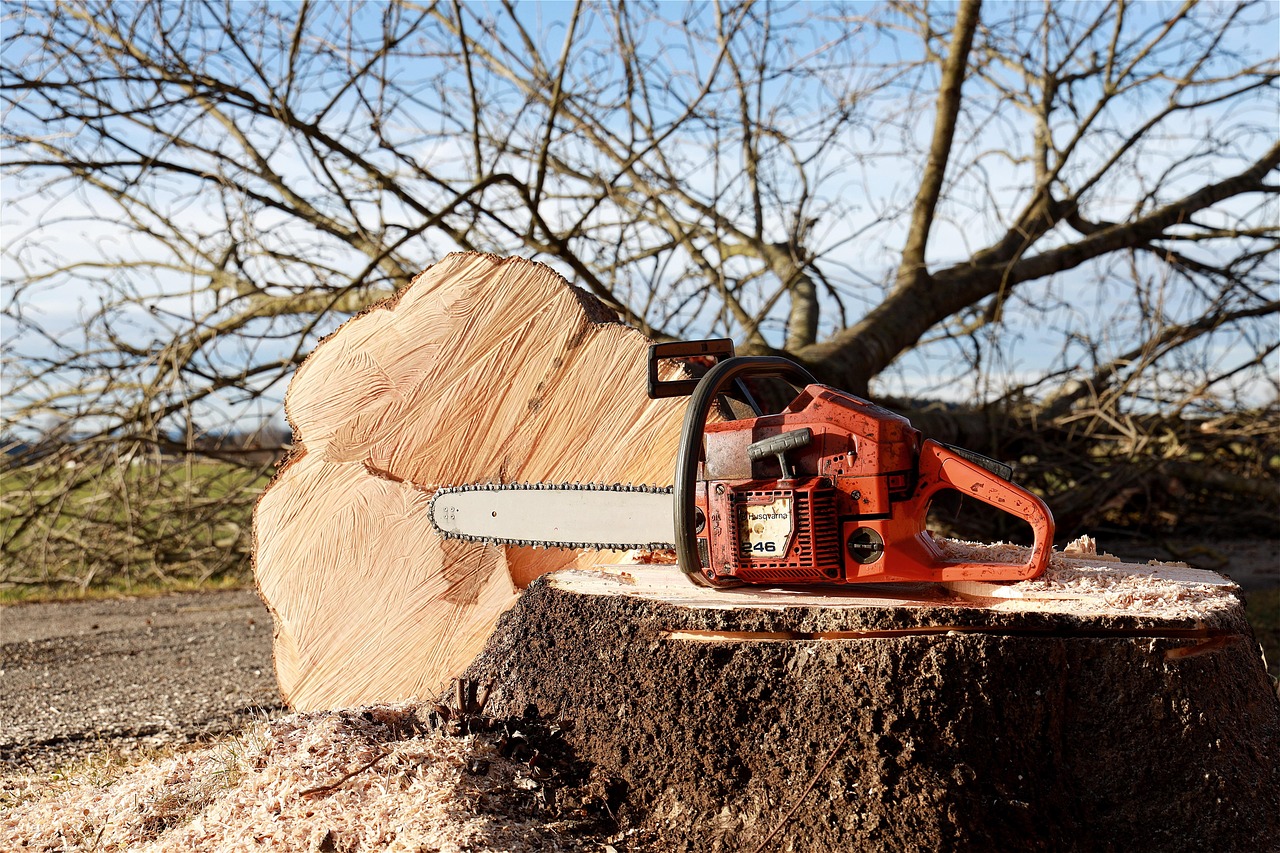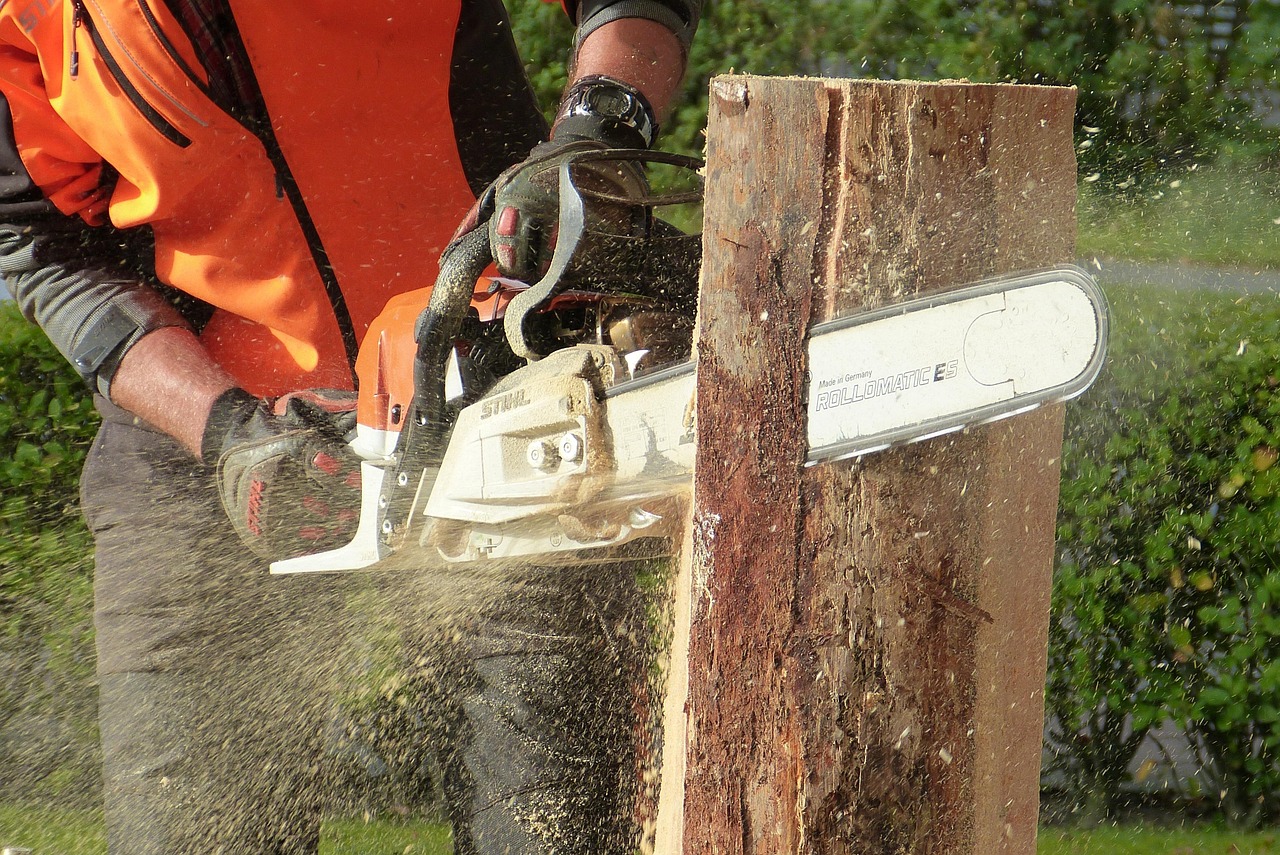To restore the shape of overgrown trees, start by assessing their structure. Remove dead or diseased branches first. Then, prune to encourage a balanced appearance. Focus on shaping the canopy while ensuring enough light and air circulation reach the inner parts of the tree.
Understanding Overgrown Trees
Overgrown trees can often become a challenge for homeowners and gardeners alike. While trees add beauty and value to properties, their unchecked growth can lead to various issues. Overgrown trees may obstruct views, interfere with power lines, or even pose risks to nearby structures.

Pruning is essential for maintaining healthy trees and ensuring they remain aesthetically pleasing. It involves the selective removal of branches to shape the tree and promote healthy growth. Knowing when and how to prune is crucial, especially for trees that have grown too large for their surroundings.
Common Signs of Overgrowth
Identifying an overgrown tree is the first step toward effective pruning. Here are some signs to look out for:
- Branches are touching or rubbing against each other.
- New growth appears weak or spindly.
- The tree is blocking sunlight from reaching other plants or areas.
- There are dead or diseased branches present.
- The tree has an unbalanced canopy or irregular shape.
Benefits of Pruning
Pruning offers multiple advantages that contribute to the health and longevity of trees. These benefits include:

- Improved Health: Removing dead or diseased branches can prevent the spread of pests and diseases.
- Enhanced Growth: Proper pruning encourages new growth and helps maintain the tree’s natural shape.
- Increased Safety: Reducing overhanging branches lowers the risk of falling limbs that could damage property or injure individuals.
- Aesthetic Appeal: Regular pruning keeps trees looking neat and well-maintained.
When to Prune
The timing of pruning is critical for successful tree care. Generally, the best time to prune most trees is during late winter or early spring, before new growth begins. This timing allows trees to heal quickly and minimizes stress. However, some species may have specific requirements.
Seasonal Considerations
Here is a simple table outlining the best times to prune different types of trees:
| Tree Type | Best Pruning Time |
|---|---|
| Deciduous Trees | Late winter to early spring |
| Evergreen Trees | Late spring to early summer |
| Flowering Trees | After flowering in spring |
| Fruit Trees | Late winter to early spring |
Essential Tools for Pruning
Having the right tools can significantly impact the effectiveness of your pruning efforts. Here are some essential tools you should consider:

- Pruning Shears: Ideal for small branches and precise cuts.
- Loppers: Useful for cutting larger branches that pruning shears cannot handle.
- Saw: A handsaw or a chainsaw may be necessary for very large branches.
- Gloves: Protect your hands while working with branches and tools.
- Ladder: If you need to reach higher branches, a sturdy ladder is essential.
Basic Pruning Techniques
Understanding basic pruning techniques is key to restoring the shape of overgrown trees. Here are some methods you can apply:
Crown Thinning
This technique involves selectively removing branches throughout the tree’s canopy. This helps increase light penetration and air circulation while maintaining the tree’s overall shape.
Crown Reduction
Crown reduction involves shortening the height and spread of the tree. This technique is beneficial for overgrown trees that need size management without sacrificing their natural form.

Crown Cleaning
Crown cleaning focuses on removing dead, damaged, or diseased branches. This method improves the overall health of the tree and promotes new growth.
Crown Raising
Crown raising removes lower branches to create vertical clearance. This technique is helpful if a tree is encroaching on walkways or structures.
Each of these techniques requires careful consideration of where to cut and how much to remove. Always aim for clean cuts just above a bud or lateral branch to encourage proper healing and growth.
Pruning Techniques for Different Tree Species
Different tree species may require specific pruning techniques to ensure their health and shape. Understanding the unique needs of various trees will help you apply the right methods effectively. Below, we explore pruning approaches tailored to common tree types.
Deciduous Trees
Deciduous trees, which lose their leaves seasonally, often benefit from pruning during late winter or early spring. This timing promotes healthy growth and minimizes the risk of disease.
- Technique: Use crown thinning and crown reduction methods to maintain an open canopy.
- Considerations: Avoid heavy pruning, as this can shock the tree and reduce blooming.
Evergreen Trees
Evergreen trees retain their foliage year-round, making their pruning needs different from deciduous species. The best time to prune these trees is during late spring to early summer.
- Technique: Crown cleaning is crucial for removing dead or weakened branches.
- Considerations: Take care not to remove more than one-third of the tree’s foliage in a single season.
Flowering Trees
Flowering trees should be pruned after they blossom to avoid removing potential flowers for the next season. This practice ensures that your tree continues to produce blooms year after year.
- Technique: Implement crown thinning and crown cleaning methods.
- Considerations: Be cautious of the timing to avoid cutting off developing flower buds.
Fruit Trees
Pruning fruit trees plays a vital role in maximizing fruit production and maintaining shape. Late winter or early spring is an ideal time for this task.
- Technique: Use crown reduction and thinning to allow sunlight to penetrate the canopy.
- Considerations: Focus on creating an open center for better air circulation and light exposure.
Safety Precautions When Pruning
Safety should always be a priority when you undertake tree pruning. Here are some essential precautions to follow:
- Wear Protective Gear: Use gloves, goggles, and a hard hat to protect yourself from falling branches and debris.
- Check Your Tools: Ensure all tools are sharp and in good condition. Dull tools can cause more damage to the tree.
- Use Proper Ladder Techniques: If using a ladder, ensure it is stable and positioned on level ground. Never overreach while on the ladder.
- Avoid Pruning in Bad Weather: Windy or rainy conditions can increase the risk of accidents.
Common Mistakes to Avoid
Even experienced gardeners can make mistakes when pruning trees. Here are some common pitfalls to watch out for:
- Over-Pruning: Removing too many branches at once can stress the tree and lead to poor health.
- Poor Cuts: Making cuts too close to the trunk or too far from a bud can harm the tree. Aim for clean cuts just above a lateral branch.
- Lack of Planning: Failing to assess the tree’s structure before pruning can result in an unbalanced appearance.
- Ignoring Tree Species Needs: Not considering the specific requirements of different species can lead to improper care.
The Importance of Aftercare
After pruning, it is crucial to provide proper aftercare for your trees. This helps them recover from the stress of pruning and encourages healthy regrowth.
- Watering: Ensure the tree receives adequate water, especially during dry spells.
- Fertilizing: Applying a balanced fertilizer can support new growth and improve overall health.
- Pest Management: Monitor for pests and diseases after pruning, as these may exploit the stress caused by cuts.
Using Professional Help
If you feel overwhelmed by the task of pruning overgrown trees, consider hiring a professional arborist. Here are some benefits of working with an expert:
- Expertise: Arborists have specialized knowledge about different tree species and their needs.
- Safety: Professionals are trained to handle equipment and work at heights safely, reducing risks for homeowners.
- Proper Techniques: Experts utilize advanced techniques that promote healthy growth while shaping the tree effectively.
The Role of Seasonal Maintenance
Ongoing seasonal maintenance is vital for keeping trees healthy beyond just pruning. Incorporating a regular maintenance schedule will help ensure that your trees thrive throughout the year.
- Aeration: Aerate the soil around trees during fall or spring to promote root health.
- Mulching: Apply mulch around the base of the tree to retain moisture and suppress weeds.
- Pest Control: Regularly check for signs of pests, particularly after heavy pruning sessions.
This proactive approach not only enhances the appearance of your trees but also supports their health for years to come.
Signs That Your Tree Needs Pruning
Understanding when your trees require pruning is essential for maintaining their health and appearance. Here are some key indicators that a tree may need attention:
- Dead or Dying Branches: If you notice any branches that are dead, brittle, or discolored, they should be removed promptly.
- Overcrowded Canopy: A dense canopy can prevent sunlight from reaching the inner leaves and branches, leading to poor growth.
- Weak Branches: Branches that are weak or have a narrow angle with the trunk are at risk of breaking and may need to be pruned.
- Pests or Disease: Trees infested with pests or affected by diseases may require pruning to remove infected areas and promote recovery.
- Growth Interference: If branches are interfering with power lines, sidewalks, or other structures, they should be trimmed back.
Advanced Pruning Techniques
Once you are familiar with the basic pruning techniques, you might want to explore more advanced methods that can enhance the health and structure of your trees.
Espalier Pruning
Espalier is a technique used to train trees to grow flat against a wall or fence. This method is popular for both aesthetic and space-saving reasons.
- Benefits: It maximizes sunlight exposure and makes fruit harvesting easier.
- Technique: Begin with young trees, securing branches to a support structure and regularly pruning to maintain shape.
Pollarding
Pollarding involves cutting back trees to a specific height, promoting bushy growth. This technique is often used for urban trees.
- Benefits: It keeps trees smaller and manageable while encouraging dense foliage.
- Technique: Conduct this pruning annually during the dormant season to ensure healthy regrowth.
Topiary
Topiary is the art of shaping trees and shrubs into ornamental forms. This requires regular maintenance and skill but can create stunning visual effects in gardens.
- Benefits: Adds an artistic element to landscaping and enhances garden aesthetics.
- Technique: Regularly trim new growth to maintain desired shapes throughout the growing season.
The Role of Pruning in Tree Health
Pruning is not just about aesthetics; it plays a crucial role in the overall health of trees. Here are some ways pruning contributes to tree health:
Encouraging New Growth
By removing old or damaged branches, you allow for new shoots and leaves to emerge. This rejuvenation is vital for maintaining vigor in aging trees.
Disease Prevention
Pruning helps improve air circulation within the tree’s canopy. Enhanced airflow reduces humidity levels, making it harder for fungal diseases to establish.
Strengthening Structure
Regular pruning can help develop a strong tree structure. By selectively removing weak branches, you encourage the growth of stronger limbs that can better withstand storms and high winds.
Seasonal Pruning Checklist
A seasonal checklist can help you stay organized and ensure you address all necessary tasks throughout the year. Below is a suggested seasonal pruning checklist:
| Season | Tasks |
|---|---|
| Winter | Prune deciduous trees; remove dead branches; assess tree structure. |
| Spring | Prune flowering trees after blooming; monitor for pests; fertilize newly pruned trees. |
| Summer | Crown thinning; check for pests; maintain watering schedule. |
| Fall | Prepare for winter; clean up fallen leaves; mulch around tree bases. |
Understanding Tree Growth Patterns
A key aspect of effective pruning is understanding how trees grow. Different species exhibit unique growth patterns that can influence your pruning decisions.
Growth Habit
Trees may have upright, spreading, or weeping growth habits. Knowing the natural growth habit of a tree helps determine how much to prune and where to make cuts.
Cyclic Growth
Trees often experience cycles of growth, with periods of rapid growth followed by slower phases. Pruning during the right cycle can enhance the benefits and promote better recovery.
Caring for Your Tools
The tools you use for pruning play a critical role in the success of your efforts. Proper care and maintenance of your tools will ensure they remain effective and safe to use.
Cleaning Tools
Before and after each use, clean your tools with soap and water. Disinfecting them with rubbing alcohol or bleach can help prevent the spread of diseases between plants.
Sharpening Blades
Dull blades can tear branches rather than making clean cuts. Regularly sharpen your pruning shears, loppers, and saws to maintain their effectiveness.
Storage
Store tools in a dry place to prevent rust and damage. Hanging tools or placing them in protective cases can extend their lifespan significantly.
Caring for your tools not only improves your pruning experience but also enhances the health of your trees by ensuring clean cuts during the process.
Understanding Local Regulations and Best Practices
Before embarking on a tree pruning project, it is essential to be aware of local regulations and best practices. Many municipalities have guidelines regarding tree care, especially for large or public trees. Understanding these rules can help avoid fines and ensure that pruning is done legally and ethically.
Local Regulations
Many cities have laws that protect certain tree species, particularly if they are considered native or endangered. Here are some points to consider:
- Permits: Some areas may require a permit for pruning or removing trees, especially those that are significant in size or age.
- Protected Species: Be aware of which trees are protected under local ordinances. Pruning these trees may require consultation with an arborist or local authority.
- Public Trees: Trees located in public spaces often have specific guidelines due to their importance in urban landscaping. Always check with the local government before proceeding with any work.
Best Practices for Pruning
Adopting best practices can enhance the effectiveness of your pruning efforts while promoting the health of your trees. Here are some recommended practices:
- Plan Your Cuts: Always plan your cuts ahead of time. Assess the branch angles and how each cut will affect the tree’s overall structure.
- Prune in Stages: If a tree is significantly overgrown, consider pruning in stages. This gradual approach allows the tree to recover between sessions.
- Use Proper Techniques: Always use the appropriate technique for the type of cut you are making, whether it’s thinning, reduction, or cleaning.
The Role of Community and Education
Community knowledge and education regarding tree care can greatly enhance local ecosystems. Engaging with local gardening clubs or educational workshops can provide valuable insights and techniques for effective tree pruning.
Community Gardening Programs
Participating in community gardening programs can help you learn from experienced gardeners and arborists. These programs often offer workshops that cover topics such as:
- Pruning techniques for various tree species.
- Identifying pests and diseases.
- Understanding soil health and tree care maintenance.
Online Resources and Workshops
The internet offers a wealth of information regarding tree care and pruning techniques. Many universities and agricultural extensions provide free resources that include:
- Tutorials on tree pruning and maintenance.
- Videos demonstrating proper techniques.
- Access to expert advice through forums and Q&A sections.
Environmental Benefits of Pruning
Pruning trees not only benefits their health but also contributes positively to the environment. Here are some environmental advantages of maintaining healthy trees through pruning:
- Carbon Sequestration: Healthy trees absorb carbon dioxide, helping to mitigate the effects of climate change.
- Biodiversity Support: Pruned trees can promote a healthier habitat for various wildlife species, contributing to biodiversity.
- Aesthetic Value: Well-maintained trees enhance the beauty of urban landscapes, making communities more inviting and pleasant.
The Importance of Monitoring Tree Health Post-Pruning
After pruning, it is crucial to monitor your trees for signs of stress or disease. Keep an eye out for:
- Crown Dieback: Look for signs of dying branches or wilting leaves, which may indicate stress or disease.
- Pest Infestations: Regularly inspect your trees for any signs of pests that may have taken advantage of the stress caused by pruning.
- New Growth Patterns: Observe how new growth develops after pruning. Healthy regrowth is a sign that your tree is recovering well.
Final Thoughts
Pruning overgrown trees is a vital aspect of maintaining their health, aesthetics, and safety. By understanding the various techniques, tools, and best practices, homeowners can effectively restore their trees’ shapes while ensuring their longevity. Additionally, being mindful of local regulations, engaging with community resources, and monitoring tree health post-pruning will enhance the overall success of your efforts.
The journey toward proper tree care is ongoing and requires patience and commitment. With careful attention and informed practices, you can enjoy the beauty and benefits of healthy trees for years to come.
